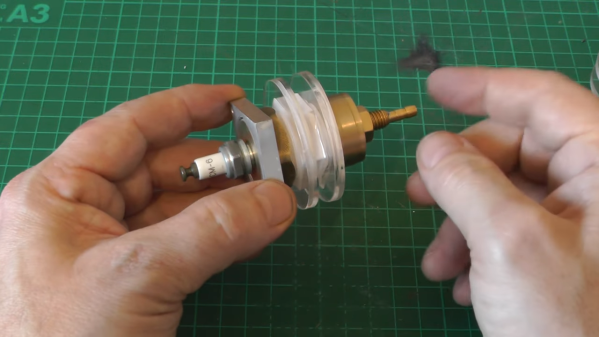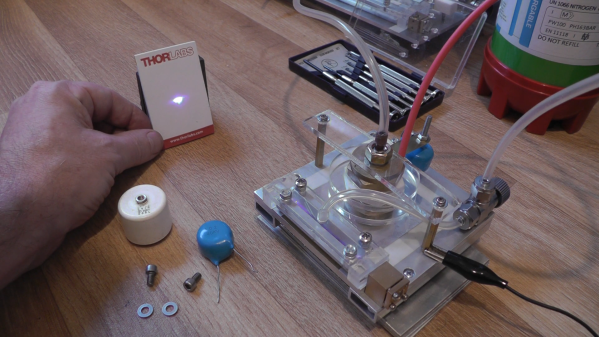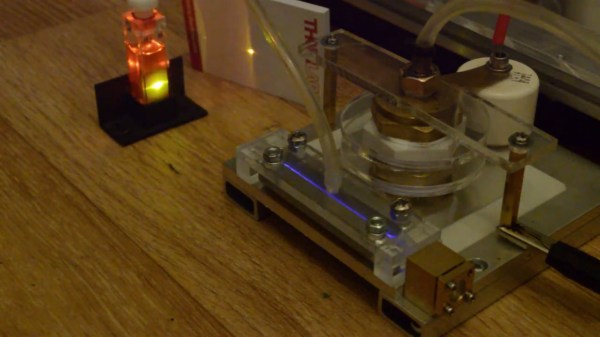A piece of glass, some bits of tinfoil, a sheet of plastic, a couple of razor blades, and a few assorted bits and bobs are all it takes to build this TEA nitrogen laser. Oh, and a 5,000-volt flyback supply with enough amperage to stop your heart. You’ll need that too.
Seriously, if you choose to follow [MultiverseCurator] ‘s example and build this laser, you’ll want to take the proper precautions. A transversely excited atmospheric laser is simple in concept, but there are plenty of ways for them to go wrong. Unlike the gas lasers used in laser cutters, there’s no enclosed resonator cavity or mirrors. Rather, the excitation takes place across a narrow gap between two electrodes, using atmospheric nitrogen as the lasing medium. This results in hard UV emissions, which means you can’t see them with the naked eye. Add to that the spark gap creating extremely loud discharges as the laser operates, and hazards abound. Proceed with caution.
Construction starts with a flat glass plate and a pair of large capacitors made from aluminum foil plates separated by a plastic dielectric. The razor blades are connected across the capacitors, separated by a narrow gap, with an inductor made from magnet wire in parallel. A spark gap made from nuts and bolts goes in series, and the whole assembly gets connected to a high-voltage power supply — [Multiverse] used a ZVS driver and a CRT flyback transformer with an eight-megohm resistor in series. The video below has all the build details.
It’ll take a little fiddling to get it lasing, and you’ll need something phosphorescent to see the UV light — a scrap of copy paper should do. But the results are pretty amazing for something made from scrap. If you want to take the design to the next level, you’ll want to check out [Les Wright]’s TEA laser build.
Continue reading “Got Junk? Then Build This Scrappy TEA Laser”













